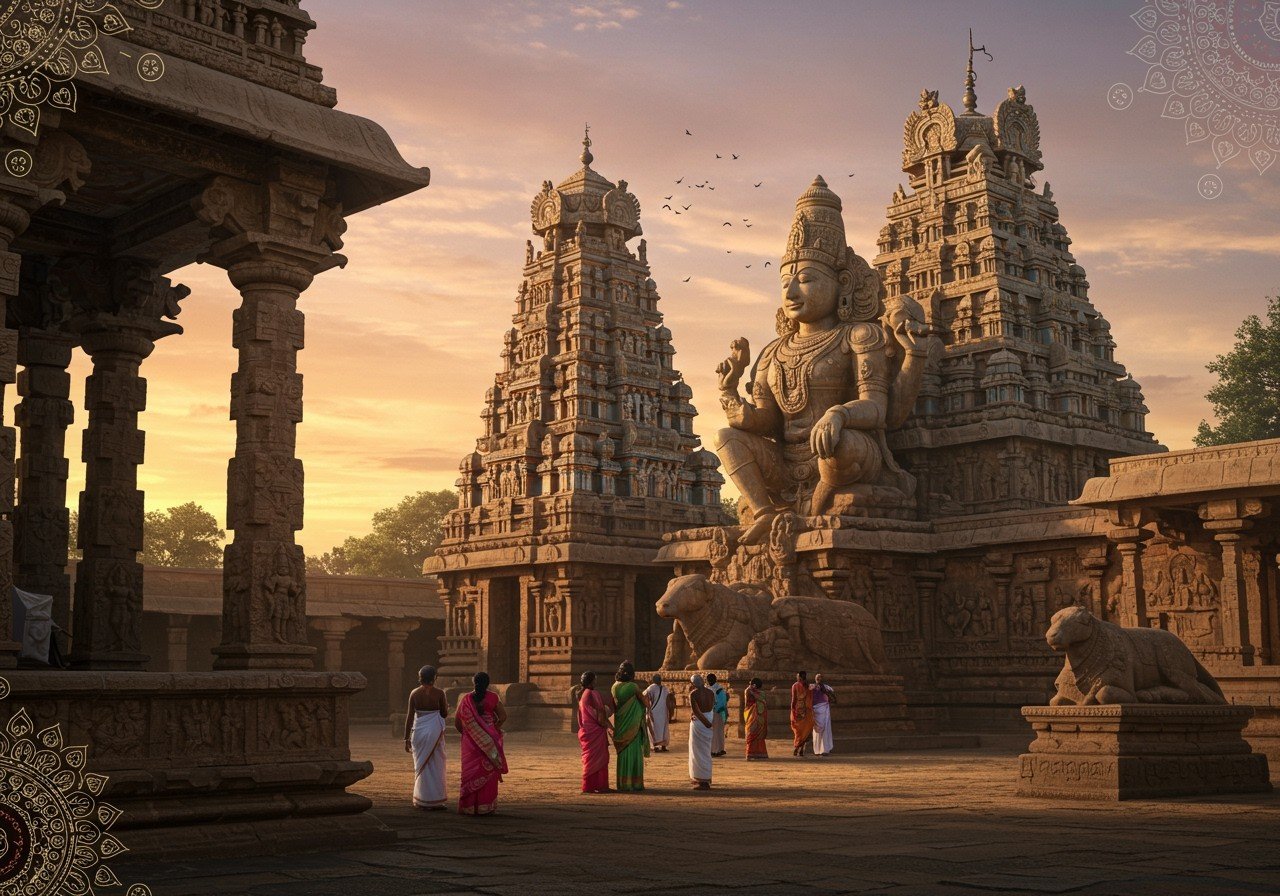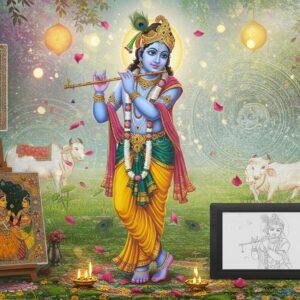
The Lepakshi Temple, also known as the Veerabhadra Temple, stands as a magnificent example of Vijayanagara architecture. Located in the Anantapur district of Andhra Pradesh, it is renowned for its intricate carvings, vibrant frescoes, and the enigmatic hanging pillar. This article delves into the architectural marvels of the Lepakshi Temple, exploring its historical and cultural significance.
Historical Background
Built in the 16th century during the reign of the Vijayanagara Empire, the Lepakshi Temple was commissioned by Virupanna and Viranna, governors under King Achyuta Deva Raya. As per records from July 4, 2024, the temple is dedicated to Veerabhadra, a fierce incarnation of Lord Shiva, and serves as a significant pilgrimage site. This era witnessed the rise of distinctive architectural styles and cultural practices.
- Construction Timeline: Constructed in the 16th century during the Vijayanagara Empire.
- Architectural Style: Reflects the grandeur and intricate details of the Vijayanagara architectural style.
- Significance: Played a crucial role in promoting cultural and religious practices during the Vijayanagara period. Supported highly skilled artisans and craftsmen.
Architectural Features
The Lepakshi Temple exemplifies Dravidian architecture with unique elements that set it apart. The layout encompasses a sanctum (garbhagriha), antechamber (antarala), and a hall (mukha mandapa).
- Monolithic Nandi: A colossal Nandi statue, among the largest in India, greets visitors at the entrance.
- Hanging Pillar: An architectural marvel that appears to defy gravity, captivating visitors with its mystique. It is a testament to the engineering prowess of the Vijayanagara artisans.
- Exquisite Frescoes: The ceilings are adorned with vibrant frescoes depicting scenes from the Ramayana, Mahabharata, and Puranas, showcasing the rich storytelling tradition of the time.
- Detailed Carvings: The walls and pillars are embellished with intricate carvings of divine beings, dancers, musicians, and mythical creatures, reflecting the artistic skill and devotion of the craftsmen.
Legends and Myths
The temple is steeped in folklore, adding to its mystique and allure.
- Jatayu Legend: Believed to be the place where Jatayu, the mythical bird, fell after being wounded by Ravana. The name ‘Le Pakshi’ translates to ‘rise, bird,’ as uttered by Lord Rama to Jatayu.
- Virupanna’s Punishment: Legend has it that construction was halted due to the misuse of funds, leading Virupanna to blind himself as a form of repentance. This story adds a layer of human drama to the temple’s history.
Cultural Significance
Beyond its architectural splendor, the Lepakshi Temple holds immense cultural and religious importance.
- Classical Dance and Music: The carvings of dancers and musicians highlight the temple’s role in promoting these art forms. These depictions offer a glimpse into the cultural practices of the Vijayanagara period.
- Annual Festivals: The temple hosts vibrant annual festivals that draw large crowds and showcase the region’s rich traditions. These festivals provide a platform for cultural expression and community bonding.
- Local Art and Craftsmanship: The Lepakshi Temple has significantly influenced local art and craftsmanship, inspiring generations of artisans. The temple’s intricate designs continue to be studied and replicated today.
Visiting Lepakshi
For those planning a visit:
- Location: Anantapur district, Andhra Pradesh, India.
- Best Time to Visit: October to March for pleasant weather.
- How to Reach: Easily accessible by road from major cities like Bangalore (approx. 120 km) and Hyderabad. Rail and air connectivity are also available.
- Nearby Attractions: Explore nearby attractions like Papanasam Falls and Penukonda Fort to enhance your trip.
Poojn.in: Your Spiritual Companion
Enhance your spiritual journey with Poojn.in, India’s leading online store for puja samagri and divine idols. We offer a wide selection of high-quality products perfect for your home altar or as offerings at Lepakshi Temple:
- Brass and Copper Items: Ideal for Abhishekam and other rituals.
- Traditional Lamps (Deepam): Illuminate your prayers with authentic oil lamps.
- Sacred Powders (Kumkum, Vibhuti): Essential for traditional worship.
- Idols of Deities: Bring divine presence into your home with beautifully crafted idols.
- Puja Thalis and Accessories: Complete your worship setup with essential items.
Visit Poojn.in today to discover a wide range of spiritual products and enhance your connection with the divine.
Conclusion
The Lepakshi Temple stands as a testament to India’s rich cultural heritage and architectural brilliance. A visit to this sacred site is not just a journey through history but also a spiritual experience. From the awe-inspiring monolithic Nandi to the captivating frescoes and the enigmatic hanging pillar, every aspect of the temple tells a story of devotion, artistry, and tradition. As you explore the Lepakshi Temple, immerse yourself in the legends and myths that enhance its allure. It is a place where history, culture, and spirituality converge, offering a unique and enriching experience to every visitor.


